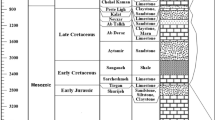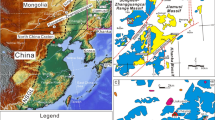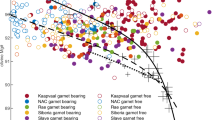Abstract
TWO muscovite-rich red phyllites, one of chemical composition (per cent): SiO2 59.6, TiO2 0.9, Al2O3 18.1, Fe2O3 3.4, FeO 4.6, MnO 0.1, MgO 3.4, CaO 0.2, Na2O 0.9, K2O 4.7, H2O 3.4, P2O5 0.2, CO2 nil, total 99.5, carry a quartz–paragonite–muscovite–chlorite–hæmatite–rutile–apatite mineral assemblage. They come from the Dunoon phyllite, a low-grade horizon of the Dalradian, ½ and ¾ mile north along the coast from Dunoon, Argyllshire. This is the first recorded appearance of paragonite as a rock-forming mineral from the Scottish metamorphic rocks, and its appearance elsewhere in low-grade rocks without albite is considered likely.
This is a preview of subscription content, access via your institution
Access options
Subscribe to this journal
Receive 51 print issues and online access
$199.00 per year
only $3.90 per issue
Buy this article
- Purchase on SpringerLink
- Instant access to full article PDF
Prices may be subject to local taxes which are calculated during checkout
Similar content being viewed by others
References
Rosenfeld, J. L., Thompson, J. B., and Zen, E., Amer. Mineral., 69, 1637 (1958).
Author information
Authors and Affiliations
Rights and permissions
About this article
Cite this article
MCNAMARA, M. Paragonite from the Dalradian. Nature 197, 1193 (1963). https://doi.org/10.1038/1971193b0
Issue date:
DOI: https://doi.org/10.1038/1971193b0



